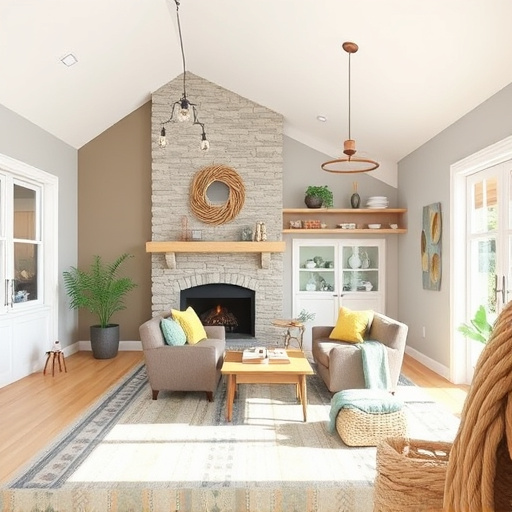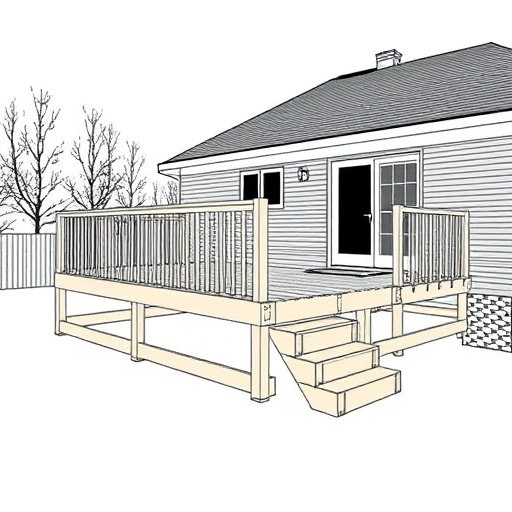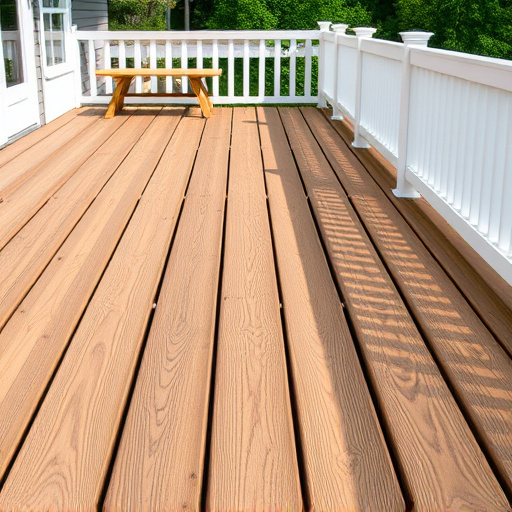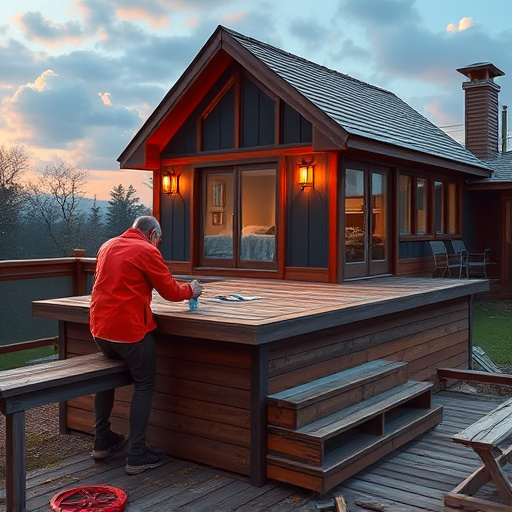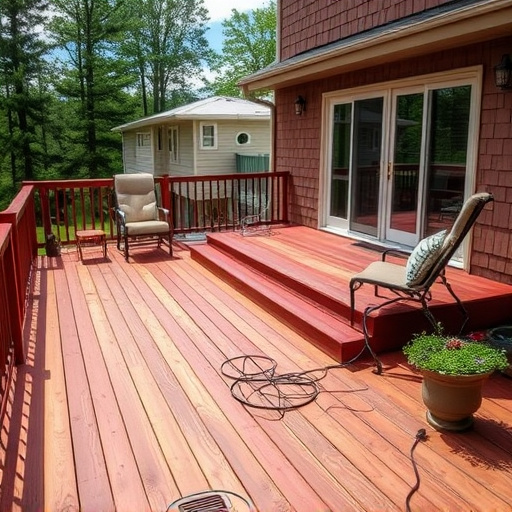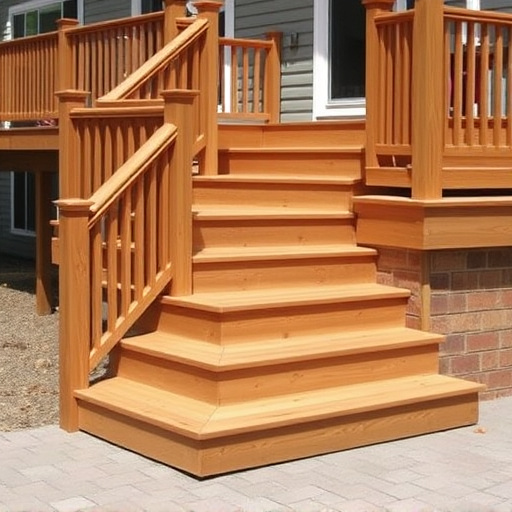Define deck purpose and style, aligning with home design and intended use. Choose materials, colors, and accents for a cohesive aesthetic. Plan functionality, flow, and features for entertainment or relaxation. Incorporate shade, lighting, and water to create a blended landscape.
Creating a custom deck is an art that transforms outdoor spaces into functional, beautiful oases. In this guide, we’ll walk you through the essential steps to crafting the perfect deck design. From defining your deck’s purpose and style to selecting robust materials and harmonious colors, and planning layout and functionality—get ready to elevate your outdoor living. Discover tips and tricks to make your dream deck a reality.
- Define Your Deck's Purpose and Style
- Choose Materials and Colors Carefully
- Plan Layout and Functionality Optimally
Define Your Deck's Purpose and Style
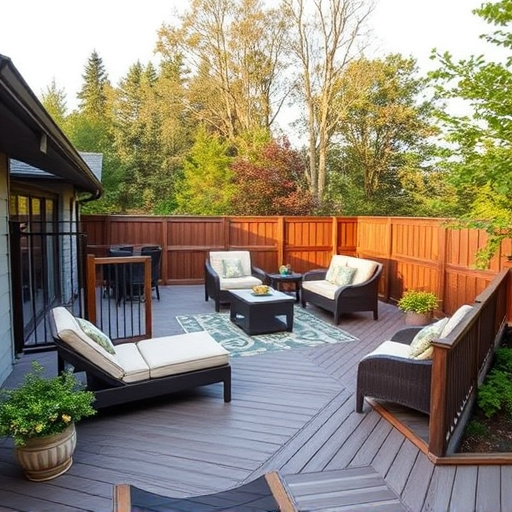
Before diving into the technical aspects of deck design, it’s crucial to define your deck’s purpose and style. Start by considering how you intend to use the deck—is it primarily for relaxation, entertaining guests, or as an extension of your living space? Each function requires a distinct layout and aesthetics. For instance, if it’s a social hub, you might want a spacious, open design with ample seating areas and a dining setup. On the other hand, if it’s meant for quiet contemplation, a more intimate, sheltered corner with comfortable chairs could be ideal.
Your chosen style will also influence the overall look and feel of your deck. Whether you’re envisioning a modern, minimalist aesthetic, a rustic charm, or something in between, this decision should align with your home’s exterior design—including roofing and siding installation considerations. Incorporating these elements seamlessly can elevate your deck from a simple outdoor structure to an impressive exterior home improvement that enhances the curb appeal of your property. Remember, thoughtful planning ensures your custom deck design not only meets but exceeds your expectations.
Choose Materials and Colors Carefully
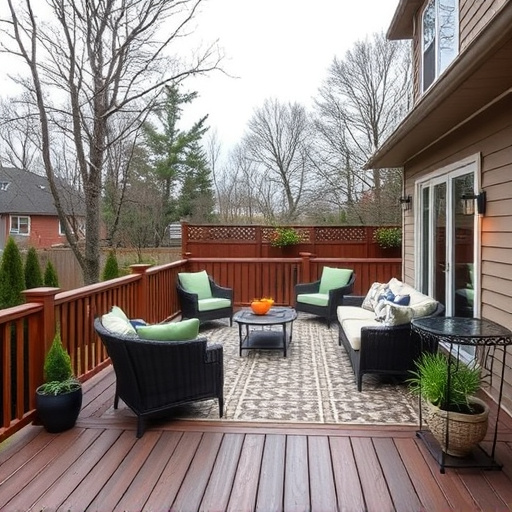
When designing your custom deck, selecting the right materials and colors is a crucial step that can significantly impact the overall look and durability. Opt for high-quality decking materials such as composite, wood, or vinyl, ensuring they’re suitable for outdoor use and climate conditions in your area. Composite decks offer low maintenance and come in various colors, while real wood adds natural charm but requires more upkeep. Consider the color of your home’s residential siding and roofing to create a cohesive exterior aesthetic.
Complement these choices with carefully chosen accent colors for railings, balusters, and other deck features. Think about how light interacts with your deck design throughout the day—darker shades can absorb heat while lighter tones reflect it—and choose colors that enhance your outdoor living space’s ambiance. Don’t underestimate the impact of small details; they contribute to a cohesive and visually appealing deck design.
Plan Layout and Functionality Optimally
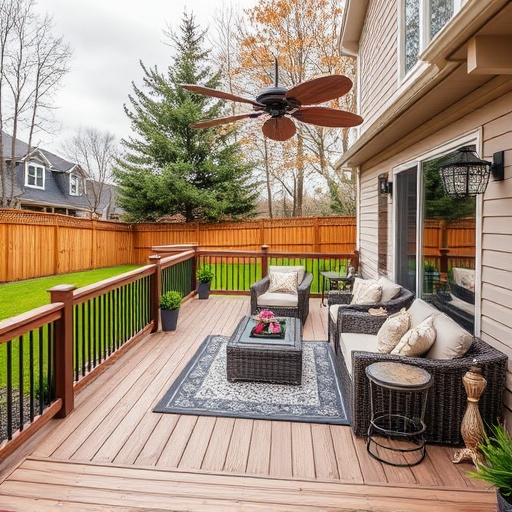
When planning your deck design, optimal layout and functionality go hand in hand. Imagine the space you want to create—a gathering spot for entertaining, a serene retreat, or an extension of your indoor living area. Consider how you’ll use the deck and who will be utilizing it. This will dictate the placement of seating areas, dining spaces, or even a firepit. A well-thought-out layout ensures that every element serves a purpose and creates a balanced, inviting atmosphere.
Incorporating features like built-in storage for grill supplies, benches with storage compartments, or a custom-built bar area enhances functionality. Think about the flow of movement on the deck—how people will navigate from one area to another. Ensure there’s enough space for traffic without feeling cramped. And don’t forget to integrate essential outdoor elements like shade structures, lighting, and perhaps even a small water feature to create a truly special custom deck design that goes beyond basic functionality and becomes a focal point of your home—one that blends seamlessly with the surrounding landscape and requires minimal roof repair or siding repairs over time, thanks to careful planning.
Creating a custom deck involves a blend of aesthetics and functionality. By defining your deck’s purpose, carefully selecting materials and colors, and planning layout and usability, you can transform your outdoor space into a stunning and practical addition. Remember, the perfect deck design combines form and function, enhancing your lifestyle and the beauty of your home.

